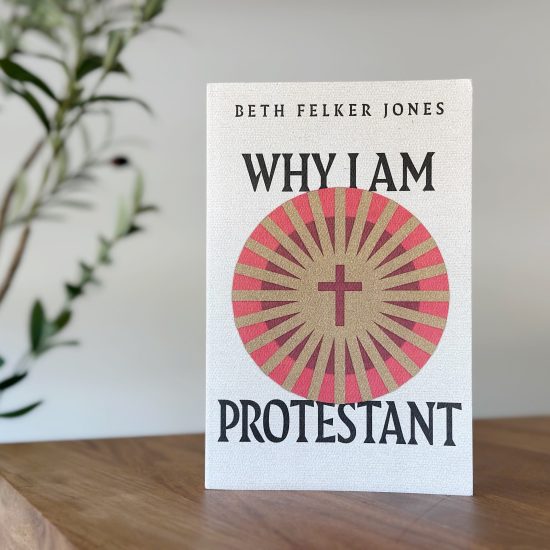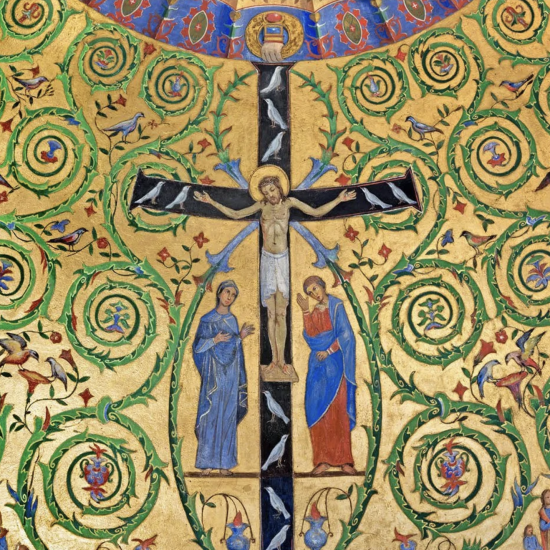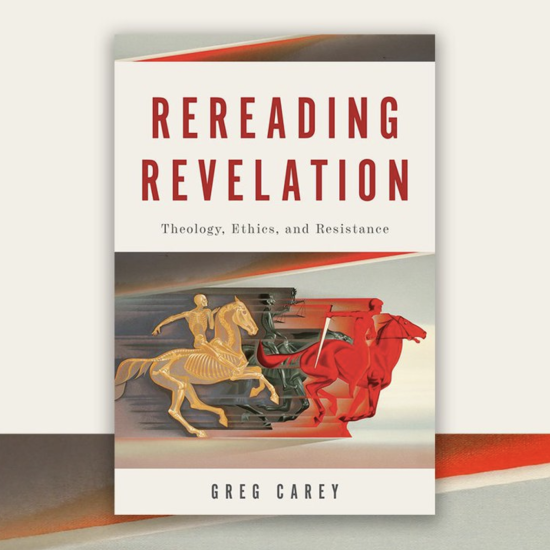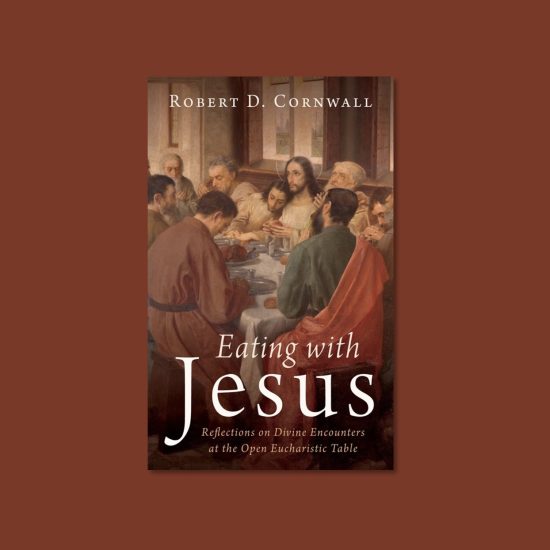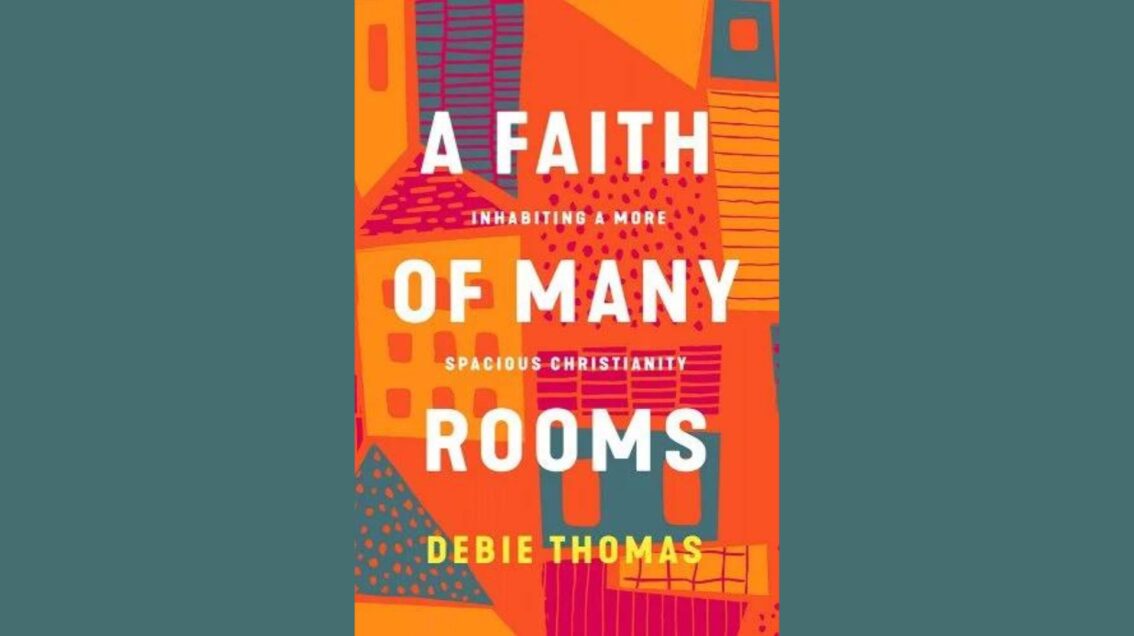

A FAITH OF MANY ROOMS: Inhabiting a More Spacious Christianity. By Debie Thomas. Minneapolis, MN: Broadleaf Books, 2024. 184 pages.
Too often Christians live in theologically cramped dwellings, with little room to move or welcome others into the dwelling place. As a result, we often fail to truly understand God’s gracious and welcoming nature. Therefore, we need reminders that Jesus was and is a welcoming person. We see this in his eating habits and messages of love and mercy. If this is true then it is appropriate that our theologies reflect the openness that Jesus exhibited as he revealed the nature of God in and through his life, death, and resurrection. Fortunately, some people and communities embrace a spacious Christianity.

Robert D. Cornwall
If you seek a more open and “spacious” Christianity, then you will be blessed if they choose to read Debie Thomas’s A Faith of Many Rooms. This book is a beautifully written and compelling exploration of a spacious Christianity. The author, Debie Thomas, brings her own spiritual journey into the conversation. She shares this message of a “more spacious Christianity” by bringing into the conversation her background as an Indian American Christian. Born into an evangelical family today Thomas is an Episcopalian, serving as a minister at St. Mark’s Episcopal Church in Palo Alto, California. She is a columnist for the Christian Century and author of Into the Mess and other Jesus Stories.
Although Thomas is Protestant, having been raised in Protestant churches in India and the United States (her father was a pastor serving both predominantly white and Indian congregations), she traces her spiritual roots much further back in time, to the faith community planted in her ancestral homeland of Kerala in Southern India. It is there, in Southern India that St. Thomas is said to have ministered and, in the end, martyred for his faith. As such, her first language as a child was the Malayalam language. It is Thomas’ story of doubt and service that permeates Thomas’ book.
This is a book about belonging. Thomas begins by introducing the reader to the word Nadhe, a word that is treasured by her immigrant family, a word roughly translated as birthplace, mother country, heart of belonging, or home. It is a word that brings to mind her ancestry in a region where she was born, but from which her family immigrated shortly thereafter. Nevertheless, though Thomas grew up in Boston, she spent many summers in Kerala. Therefore, this ancestral homeland serves as the foundation for her spiritual journey. She speaks in the book about experiencing dislocation and finding it difficult to belong. This is a situation that she shares with many bicultural people. In part, this is the story of her journey to experience a sense of belonging. Of course, it’s not just bicultural people who feel that they don’t belong spiritually, as many others find it difficult to find a spiritual home, especially as church membership shrinks. So, even as she shares her own story of seeking that place of belonging, she explores the changing geography of belief. Thus, part of the story is Thomas’s path of discovering a spiritual home that is different in many ways from the one she inherited. That inherited faith was, as Thomas shares with us, rather male-centric, patriarchal, and theologically narrow. She eventually discovered that she did not fit in the evangelical church of her spiritual origins.
After Thomas provides us with a lengthy introduction that sets the parameters of the book, Thomas takes us on a pilgrimage to India. In a chapter titled “A St. Thomas Pilgrimage: Doubt,” we journey to Kerala. At the time Thomas took this pilgrimage, she was a graduate student in creative writing at Ohio State University, attempting to write a thesis about her faith. When she took this journey, she was experiencing a spiritual crisis. As she was in the midst of this crisis, she returned to “the ancient place that birthed my relationship with God” (p. 13). Therefore, we travel with her to the Mount of St. Thomas, a place that Indian Christians consider sacred. On that mountain, there is a giant statue of the founding saint. At the base of the statue, one finds the words from the Gospel of John, where Thomas declares of Jesus: “My God, my God.” By taking us to Kerala and this sacred place, we who know the name and biblical story of Thomas learn something important about the disciple who is best known for his doubts, a disciple, who according to Tradition, became a missionary and a martyr. Whether or not the story of Thomas’ ministry in India is factual, it is the spiritual foundation story for Indian Christians. This is true even if one is not part of the ancient Mar Thomas church. Therefore, if for no other reason, this opening chapter is worth the price of the book.
While Kerala is the starting point on this journey to belonging, there is still much more to the story. Thus, we move from Kerala and the foundational story of St. Thomas’ ministry to her immigrant story. Thus, in Chapter 2 we join the family as they first immigrate to Switzerland, where her father attended seminary. From there the family moved to the United States, where her father would serve as a pastor. This chapter draws on Jesus’ statement to prospective disciples as a point of orientation. So we consider Jesus’ statement that the Son of Man has “Nowhere to Lay His Head.” Thomas uses this imagery to describe her own and her family’s experiences as immigrants. It speaks to the reality of feelings of not belonging as well as leaving behind past homes, which for her includes leaving behind her evangelical home. She notes that “much of the Bible is written by, for, and about wanderers. Clearly, there is something powerful, instructive, and transformative about leaving home” (p. 40). I sense that many will resonate with this chapter.
From “leaving” we move in Chapter 3 “Into the Wilderness: Lost.” Here Thomas describes her own season of wandering in the wilderness and the feeling of being lost. This season of lostness involves not knowing where one would finally land, while the feelings concerning what was left behind remain strong. I have heard a number of my immigrant friends speak of this feeling of lostness and displacement, that feeling of not quite belonging. The question raised here concerns how one might experience the life of the pilgrim, such that one holds things lightly as one continues down a path uncertain as to the destination.
One way of navigating this spiritual reality is through storytelling. She explores the act of storytelling in Chapter 4, which is titled “Beyond Belief: Story.” She writes that “Stories hold memory and identity, seasons and secrets, sorrows and joys. They give our lives texture and depth, roundedness and fullness” (p. 60). She describes some of the stories that had formed her life, from the Christian rock music she listened to as a youth to the creed that gave a foundation to her faith. But she also shares how she resisted other stories that eventually became hers. She reminds us that belief-centered Christianity isn’t necessarily wrong, but it can be “divorced from our enfleshed and storied lives,” and thus isn’t enough to sustain faith. (p. 65). She writes that the “best stories affirm that life is complicated, that easy answers rarely satisfy, and that even the shiniest ‘happily ever after’ endings exact a price” (p. 71).
In Chapter 5, which is titled “She Blows Where She Wills: Spirit,” Thomas shares her discovery of the way language and stories function, often in surprising ways. So, in this chapter, Thomas draws on the story of Pentecost and the gift of the Spirit. She speaks of the diversity of languages present at Pentecost, such that “there is no single language, story, creed, or mother tongue on earth that can fully capture the spaciousness and the hospitality of God” (p. 77). It’s not that all paths are the same or that the differences between faiths are surface level for they are not. Therefore, she rightly speaks of recognizing and honoring spiritual differences as being genuine and meaningful. If this is true, as she believes (and I agree), we can be open about our faith traditions without trying to make everything look the same. We can share our story as being meaningful to us and perhaps to others, but following Jesus we don’t engage in manipulation or coercion.
In Chapter 6, titled “Getting Saved: Sin,” Thomas explores the question of sin. In exploring this concept, she shares with us how she wrestled for many years with the feeling that she was a sinner, which led her to strive for acceptance by God and others. She speaks of living in fear that she was not right with God. Many will resonate with her description of her past experiences. Thus, she invites us to consider our own questions as to the nature of sin and salvation. She helpfully points out that many progressive Christians shy away from dealing with questions as to the nature of sin and salvation. However, Thomas helpfully writes that “rightly understood, sin and salvation are precisely the roomy, expansive words we need to ground our vocations as Christ’s hands and feet in a pain-filled world. Walking away from these core tenets of our faith grants us no more freedom, spaciousness, resilience, or hope that my anxious childhood sprints to the altar” (p. 89).
From sin, we move to another topic that many Christians shy away from, and that is lament, the topic of Chapter 7. Thomas writes that too often we find it difficult to embrace lament, even though the Psalms are filled with laments. She notes how in her past she practiced a grief-averse faith, a faith that ended up being rather shallow. She reminds us that lament is not faithlessness but is instead an act of faith for in practicing lament we recognize that things are not yet as they should be. So, even though we are Easter People, “the Easter stories we cherish in the Gospels make room for ache, fear, regret, and sorrow” (p. 119).
Earlier in the book, Thomas noted that the faith she inhabited when she was young was very male-centered. As she matured spiritually and left behind a narrow evangelicalism, she began to recognize that women bear the image of God. That is the subject of Chapter 8. This is the story of Thomas discovering the feminine side of God and what that means for her as a woman. A roomy church, she suggests, has room for this message that God is not male, but allows for differing imagery that empowers rather than restricts. She finds her foundation for embracing her own identity as a bearer of God’s image in the incarnation. Thus, “he takes on the particular flesh of a first-century itinerant Jewish peasant: poor, colonized, and criminalized. It is out of this radical specificity that Jesus includes, embraces, and saves us, in all our specificity” (p. 133).
In Chapter 9 Thomas invites to embrace dissonance and paradox. Thus, she writes “Again and again, the way of Jesus invites us to hold opposing truths together, in pairings that seem impossible. This is not to confound us but to show us how wide and spacious the realm of God really is.” (p. 141). There is no greater paradox than the Trinity, that God is both three and one.
So, we can approach uncertainty not with fear but curiosity, such that we can recognize that the Christian faith is not a religion of easy answers. If we embrace this truth then perhaps, we might be open to loving those whom we find it difficult to love.
Finally, we come to Chapter 10: “Limps and Worms: Wrestling.” Here Thomas draws on one of my favorite biblical stories, the story of Jacob’s wrestling match with God. She suggests that a truly spacious faith needs to allow for spiritually wrestling matches with God. She writes that “wrestling keeps God relevant in our lives; it keeps God personal. It makes sure that God remains a force to reckon with rather than a dusty relic we stick on a shelf.” (p. 168). She also includes the story of Jonah who runs away from God and then finally gives in, preaches doom, and then gets mad when God doesn’t destroy the Ninevites. Thus, we are left with Jonah wrestling with God’s “scandalous compassion and mercy toward Jonah’s sworn enemies.”
In her epilogue to A Faith of Many Rooms, Thomas concludes the story of her spiritual journey toward inhabiting a more spacious Christianity by affirming that there comes a time when we will discover a home where we can finally stay put. Therefore, she writes that she stays a Christian because she found in Christianity the roomy house where she belongs. As we walk with her, perhaps we will find that we too belong in that roomy house.
If we know from the start that Debie Thomas holds an MFA degree in creative writing, it might not surprise us how fluid and beautifully written Thomas’s A Faith of Many Rooms is. While beautifully written, Thomas also brings exceptional spiritual and theological insight into the book. I expect that readers will resonate with different parts of the book, but to illustrate her theological insight, I found that her chapter on paradox was especially poignant in that she holds together theological positions that many progressive Christians struggle with, such as the Trinity or the resurrection of Jesus. At a time when so many people, especially former evangelicals, are experiencing spiritual deconstruction, Thomas’ vision of a spacious Christianity may prove inviting. Wherever one is on their spiritual journey, I believe that Thomas has provided us with a book that can be read and enjoyed and will provide encouragement as we seek a spiritual home in the kind of spacious Christianity Thomas describes in A Faith of Many Rooms.
This review originally appeared on BobCornwall.com.
Robert D. Cornwall is an ordained minister in the Christian Church (Disciples of Christ). Now retired from his ministry at Central Woodward Christian Church (Disciples of Christ) of Troy, Michigan, he serves as Minister-at-Large in Troy. He holds a Ph.D. in Historical Theology from Fuller Theological Seminary and is the author of numerous books including his latest “Second Thoughts about the Second Coming: Understanding the End Times, Our Future, and Christian Hope” coauthored with Ronald J. Allen. His blog Ponderings on a Faith Journey can be found at www.bobcornwall.com.

